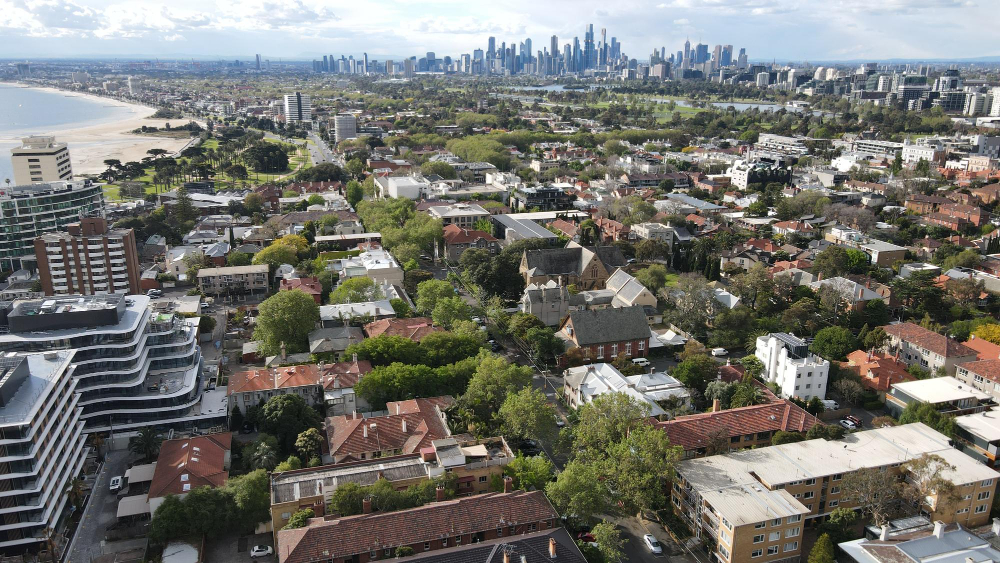A major tariff announcement from the United States has shaken global markets, with ripple effects already being felt across the world.
Australia’s connection to this global shift comes through China—our largest trading partner—whose economy may slow in response to these changes.
What happens next could shape our interest rates and drive the next move in property prices, with some cities likely to benefit more than others.
What’s Happening with Global Trade?
The US Kicks Off a Tariff War
The United States has announced a 25% tariff on imported goods—the highest seen in more than a century. This move is aimed at protecting local industries but has raised concerns about how global trade will be impacted.
In response, China has introduced its own 34% tariff on goods coming from the US. While the trade standoff is still unfolding, the early signs suggest it may escalate further in the months ahead.
Stock Markets Are Reacting Fast
Since the tariff announcement, global markets have dropped sharply. Major indices like the S&P 500 and NASDAQ fell around 5%, echoing the kind of shock we last saw during early COVID-19 uncertainty.
Investors are bracing for slower global growth and watching closely for any signs that this could trigger a wider recession.
China’s Slowdown Matters for Australia
Australia Relies Heavily on China
China is Australia’s largest trading partner, importing over $150 billion worth of goods each year—mostly minerals, coal, and iron ore. Western Australia and Queensland are particularly dependent on this trade, with local economies closely tied to mining and export activity.
If China slows down, these states are likely to feel it first.
China Shifts Its Stimulus Strategy
In the past, China would respond to economic slowdowns by investing in infrastructure—projects that relied heavily on Australian raw materials. This time, the focus is different.
China is now aiming to boost domestic consumption, encouraging its middle class to spend more rather than relying on construction to drive growth.
That shift means there may be less demand for Australian resources in the short term, especially if industrial activity softens.
What Could This Mean for Australia?
A Case for Rate Cuts
Markets are now pricing in a 50/50 chance that the Reserve Bank of Australia will cut rates by 0.5% in May—a move much larger than the usual 0.25%.
Why does this matter? Because most Australians are on variable-rate loans, unlike countries with fixed-rate systems. That means any change to rates has an immediate impact.
Even small rate cuts can quickly increase borrowing power and bring more buyers into the market.
Interest Rates and House Prices Are Linked
AbodeFinder’s analysis confirms what many investors already suspect—falling rates usually mean rising home prices.
When interest rates drop, borrowing becomes easier. That drives up competition, especially in higher-priced markets like Sydney and Melbourne.
Historically, the top end of the market benefits first and fastest when the RBA moves to cut.
Sydney vs Melbourne – Which Will Lead?
Melbourne May Have More Catch-Up Growth
Over the past few years, Sydney’s property market has outperformed Melbourne’s by a wide margin.
Melbourne prices have remained mostly flat, while Sydney surged ahead—widening the price gap between the two cities to around 53%.
That’s the biggest difference in decades. History shows that when gaps like this grow too large, they often close.
Melbourne’s current position could offer buyers more upside, especially if interest rates fall and borrowing becomes easier.
What About Recession and Unemployment?
Unemployment Doesn’t Always Kill Growth
It might sound counterintuitive, but rising unemployment hasn’t always dragged property prices down.
Historical data shows that when unemployment increases, the Reserve Bank often responds quickly by cutting interest rates.
Those cuts can ease mortgage pressure and boost borrowing power—helping property values hold steady or even rise, despite broader economic worries.
The housing market is more responsive to rate changes than job data alone.
What Should Investors Watch Next?
Expect Faster Growth in Upper Quartile Markets
When interest rates drop, higher-priced suburbs tend to react the fastest.
That’s why Sydney and Melbourne’s premium pockets are worth keeping an eye on—especially if rates are cut soon.
Regional Areas Could Also Benefit
Some regional hubs are already growing at double-digit rates.
Lower rates could add even more fuel, especially in areas with strong local demand and tight housing supply.
Conclusion
Despite all the global noise, Australia’s property market may be heading for another upswing—thanks to likely interest rate cuts. While trade tensions and recession fears dominate headlines, falling rates often lead to stronger buyer demand, especially in places where prices haven’t moved much in recent years. Investors who stay focused on value gaps and markets with growing interest—like Melbourne or key regional areas—may be well-positioned to benefit as momentum builds again.
Ready to take your next step in property investment? Use AbodeFinder’s free tools powered by Generative AI to make smarter, faster decisions:
• SuburbFinder – Discover suburbs with rising demand and strong fundamentals using real-time data and AI-driven trend analysis.
• Buying Chance Calculator – Quickly assess your borrowing power and readiness based on your situation.
• Suburb Insight – See which areas are gaining attention before the broader market catches on.
What makes AbodeFinder different? We use Generative AI to scan thousands of market signals, policy updates, infrastructure plans and buyer behaviours to suggest personalised suburb strategies so you can invest with more confidence.
🔗 Explore now at: https://abodefinder.com.au















